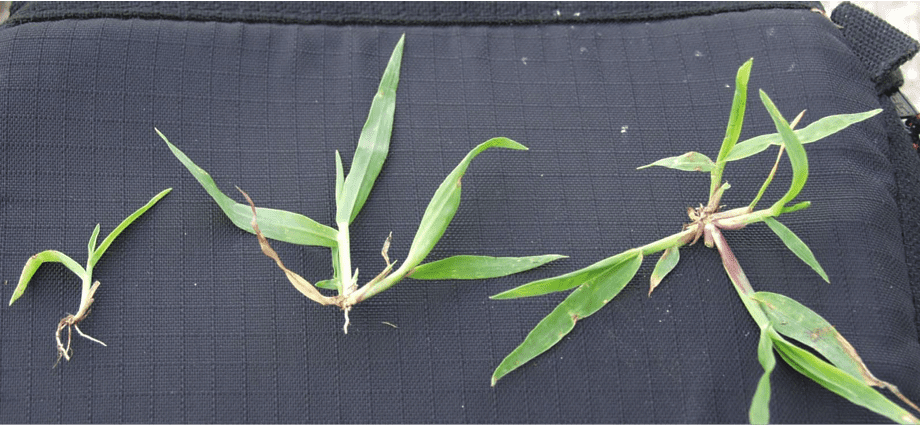Crabgrass Growth Cycle Identification and Control

Everywhere you look, crabgrass is out and at different stages of its growth cycle. This could be due to the temperature fluctuations we have seen across the country so far in 2023. In this blog post, we’ll look at the different stages of crabgrass development and how to control it accordingly.
Determining what stage crabgrass growth is currently in can greatly increase the effectiveness of your post-emergent control applications. The best way to do this is to count how many tillers are presently on the plant. Knowing how many tillers the plant has will also help you determine what product might be best for control in its current growth stage. This resource from the UMass Extension Turf Program has a helpful illustration that clarifies what a crabgrass tiller is.
The turf industry has many options for controlling crabgrass in its post-emergent stages. The simple rule is that the smaller the crabgrass, the easier it is to kill. Once the crabgrass has tillered, it will most likely take multiple applications to control. Here are a few effective chemistries to control crabgrass, depending on its development:
- Dithopyr (Dimension): Only controls crabgrass up to its first tiller. Dithopyr can also be used as a pre-emergent application.
- Quinclorac (Drive XLR8, Q-Ball): Has very good turf tolerance on warm- and cool-season species. This product controls crabgrass when it is one-tiller or smaller or when it has four or more tillers.
- Mesotrione: This product will take two applications at two-week intervals. For the best control, applications need to be made prior to the four-tiller stage.
- Topramazone: Will control with two applications at three-week intervals. This chemistry will require higher rates when crabgrass is past the first-tiller stage.
- Fenoxaprop (Acclaim Extra): This product can be used to control crabgrass up to the five-tiller stage with good results.
Combination products such as Q4 Plus will most likely take two applications when crabgrass has reached its two-tiller growth stage. Keep in mind that many of these combination products will also kill listed broadleaf weeds in the turf. These products can save on mixing tanks in the field as well.
Most post-emergent applications of crabgrass will work better with a surfactant and buffer such as LV Low Volume Spray Enhancer added to the application. LV is a powerful water conditioning system blended with a non-ionic surfactant to increase product and spray solution efficacy.
Always remember to read the label for the correct rate, turfgrass tolerance, and specific instructions before application to avoid turfgrass injury. Contact your ATS rep for help determining the growth stage of crabgrass on your property. We’ll be happy to consult on the best solution for your situation.
Austen Gearheart
Sales Representative







